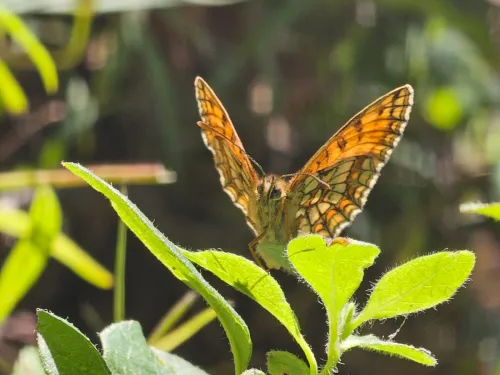
Meet the enchanting heath fritillary butterfly
This rare butterfly relies on wild woodlands - learn more & support its future.
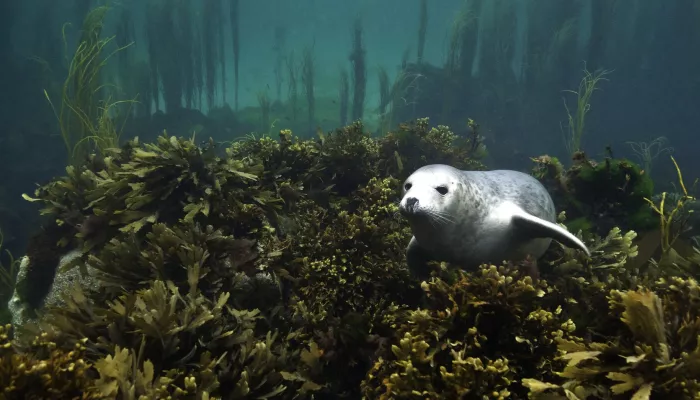
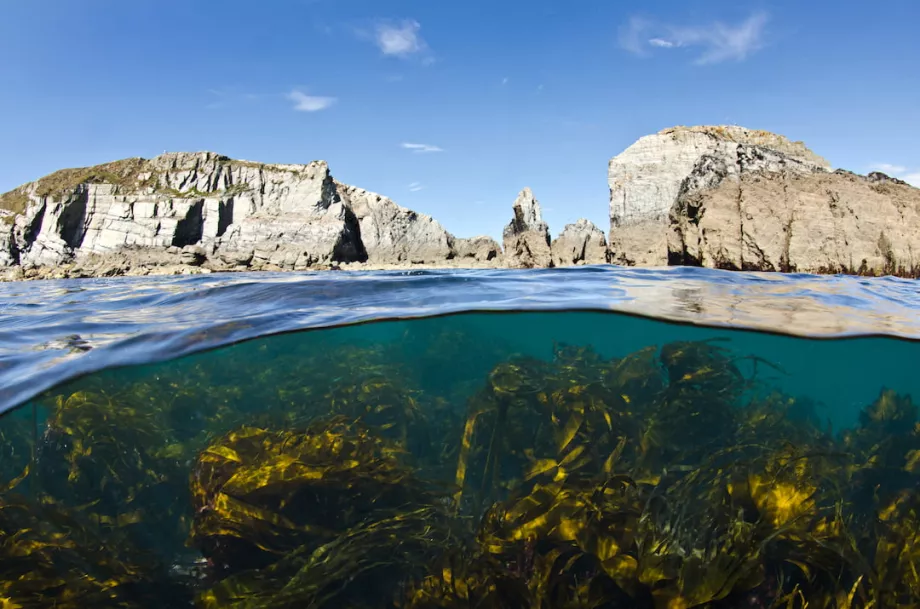
©️ Alexander Mustard/2020VISION
Kelp is now hardly present at Margate.
Kelps are large brown seaweeds that form dense beds at low tide level and below. Kelp beds are important in hosting a wide variety of marine life on the fronds, among the attachment holdfasts and in the water around. They play an important role in recycling carbon now in creasing amounts in the atmosphere. Until recently kelp species occurred widely Kent and Sussex. In the 1980s masses of kelp was regularly washed ashore at Worthing in West Sussex and caused a nuisance problem there. The unpleasant smell of rotting weed and the flies it attracted had an off-putting effect on local tourism. Today, very little kelp is washed ashore there. Our colleagues at the Sussex Wildlife Trust in collaboration with local fishermen and divers have discovered that the formerly extensive beds in West Sussex have virtually disappeared.
In 2009 colleagues and I at the Natural History Museum undertook for Natural England a baseline survey for condition assessment of the SSSI between Brighton and Beachy Head and we recorded kelp along the coast. In a recent algal survey for a forthcoming atlas of the seaweeds of Sussex I couldn’t find any in East Sussex except for small populations at Beachy Head and at Eastbourne; it had almost disappeared as in West Sussex. In Kent a healthy population remains between the South Foreland and Folkestone but even there survey evidence shows a gradual decline. On Thanet its decline is much more dramatic. It is now absent from Birchington to Margate where it was gathered. Populations remain around Walpole Bay and Botany Bay but elsewhere only scattered fronds occur. Photographs show it to have occurred abundantly ten years ago at Dumpton, Ramsgate, and elsewhere.
Other changes have occurred around our coast. Last summer at Margate there was local upset as a result of rotting, smelly seaweed. Seaweed productivity in 2023 was extraordinarily high with large amounts of particularly the Sea Lettuce washed on to shores and beaches.
Careful observation in Kent and Sussex has revealed the arrival of the Purple Top Shell Gibbula umbilicalis. This mollusc is a native British species but which previously was restricted to the southwest of England
These changes have occurred rapidly over the past two or three decades. So, what is going on? In short, global and exaggerated local increase in sea temperature although other factors can’t be excluded. A marine heatwave has hit the our coast with summer sea temperatures exceeding 18°C for several months and exceeding 20°C for weeks on end. IFCA has investigated the temporary decline to the local shellfish fishery which can be linked to the extraordinarily warm sea. Even the human species is now swimming in the sea all year round! Decades ago I can remember our inshore waters slushy or frozen in winter and a New Year’s dip was just that!
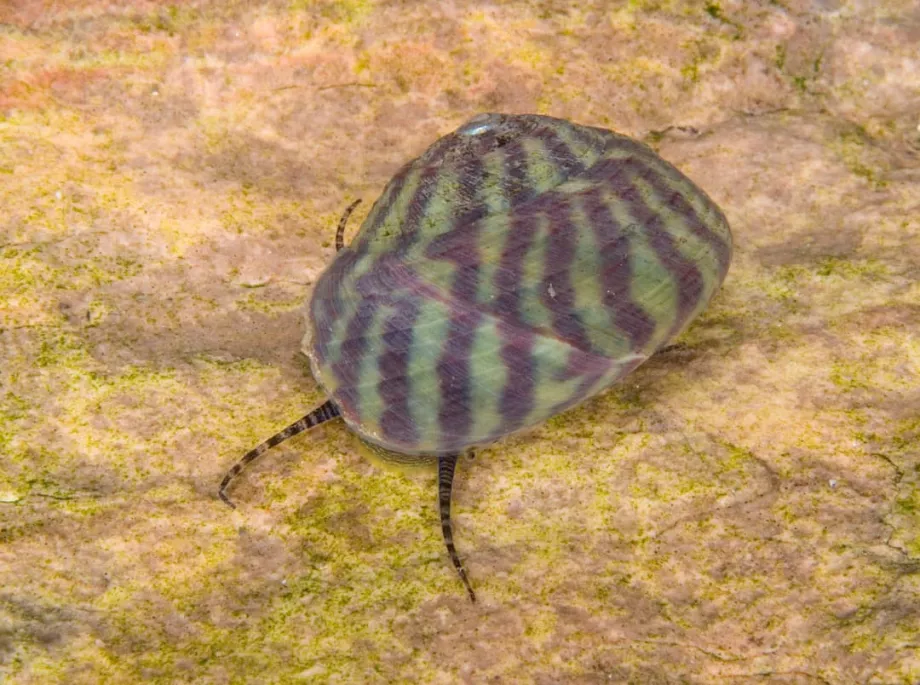
©️ Paul Naylor http://www.marinephoto.co.uk/
©️ Paul Naylor http://www.marinephoto.co.uk/
Oarweed, Laminaria digitata, has a comfort temperature of 10-15°C but will tolerate higher temperatures for short periods. Unfortunately, as mentioned, we are having higher temperatures for long periods of time during the summer period. Persistent rise of a few degrees above optimum causes stress to kelp leading to reduced growth, thallus fragmentation and death, features seen on Thanet and elsewhere in Kent and Sussex. Also, Oarweed needs a winter dip! A cold shock is required to stimulate sexual reproduction. Warm sea, nutrient enriched inshore waters, calmer summer sea conditions have probably encouraged the excessive growths of especially green seaweeds on Thanet. Again, warmer seas, have enabled the Purple Top Shell to spread eastwards along the English Channel to east Kent.
Another aspect of change to our coast is the arrival of non-native species. While marine species have been transported around the world for ages, since the second world war a significant number have turned up on the Kent coast. Some are invasive and have changed the ecological features of our seashore, others are benign. The Slipper Limpet, Crepidula fornicata, was accidently introduced in the early 20th century when the Virginian Oyster, Crassostrea virginica, was cultivated experimentally on the Essex coast. Within a decade tens of thousands of tons had carpeted the seabed in the greater Thames estuary. Witness to this today are beaches at Herne Bay and Whitstable almost entirely of Slipper Limpet shells. Other invertebrates have turned up in Kent. One exerting a significant impact is the Pacific Oyster, Magellana gigas. Widely distributed around the Kent coast, at Sheerness, Birchington and other places it dominates the seashore and its build-up has occurred over the past 20 or so years. Before then it was scantly present but did occur free-living under another guise, the Portuguese or Rock Oyster (then called Crassostrea angulata but now known to be the same species as the Pacific Oyster). It was introduced to the Essex coast but soon became free-living; the Seaside Museum at Herne Bay has specimens collected in the 1930s from Herne Bay and Tankerton. Since the millennium it has been recorded commonly. Pacific Oyster was thought not to breed in our cool seawater but over the past recent decades the rise in sea temperature has enabled it to breed successfully and spread.
Another species that has turned up in Britain in the 1970s and in Kent in the 1980s is the brown seaweed, Wireweed, Sargassum muticum. It has spread around the coast from Folkestone to Faversham. This species forms blanketing growths in pools and lagoons at Margate and masses of rafting and floating Wireweed are washed ashore at Herne Bay and Whitstable. Its spread to Europe from the Pacific was as a hitch-hiker with the Pacific Oyster more of which was imported to Britain in the 1950s and 60s to improve the failing native oyster fishery. Along with it also came Devils Tongue Weed, Grateloupia turuturu, a large, slimy red seaweed commonly occurring on the North Kent coast, and Pompom Weed, Caulacanthus okamurae, a small mossy red alga at now carpets algal turf at Shakespeare Cliff, Botany Bay and other places. It was first recorded in Plymouth Sound in 2004 and has spread like wildfire.
In this recollection I have highlighted aspects of recent change to our coast which has been most noticeable over the past 3 or 4 decades. We mustn’t forget that natural processes also cause change, the history of Romney Marsh over the past four thousand years and its enclosure, or the closure of the Wantsum Channel four or five hundred years probably had major impacts on the then coastal fauna and flora, the habitat-rich intertidal chalk platform seen at low tide around Thanet is the result of 2000 years of wave action causing cliff erosion. Even these natural coastal processes have been aided and abetted by man!
Almost forty years ago a group enthusiastic about the seashore set up the Kent Marine Group under the auspices of KWT. The Marine Group morphed into the Wildlife Trust’s volunteer Shoresearch team that continues to study the coastal fauna and flora. It was this group that first recorded Wireweed, Pompom weed, and Purple Top Shell in the county, and by recording transect and quadrat abundance data has created a baseline against which change can be measured. In view of the rapid change we are experiencing, whether caused by climate change and sea-level rise, polluting discharges, spread of non-native species, uncontrolled foraging, coastal engineering work, and natural processes in particular the continuing readjustment of southeast England from the last glacial period, the work of Shoresearch is more essential than ever. Climate change will continue to bring change to the coast and conflicts of interest will inevitably arise. Hopefully we can get around these by better understanding our coastal and marine environment. We need to collect data, make information available, educate and advocate, so that appropriate decisions can be made about how we live, work, and play on the coast and use its resources but which respect the right of other life to live there alongside us.

This rare butterfly relies on wild woodlands - learn more & support its future.
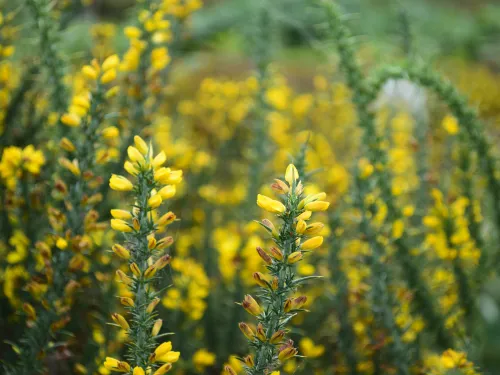
Long-time volunteer Margery Thomas explores what Hothfield Heathlands is like on a crisp November day.
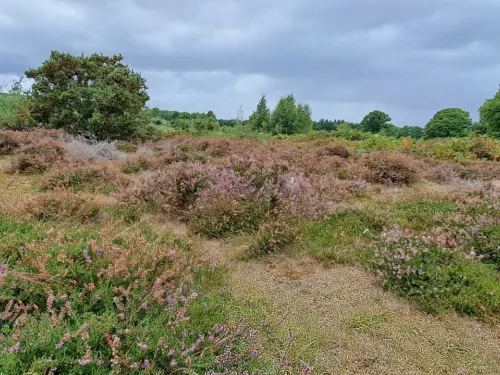
Area Manager, Ian Rickards, takes a moment to reflect on the work at Hothfield Heathlads throughout the summer months.